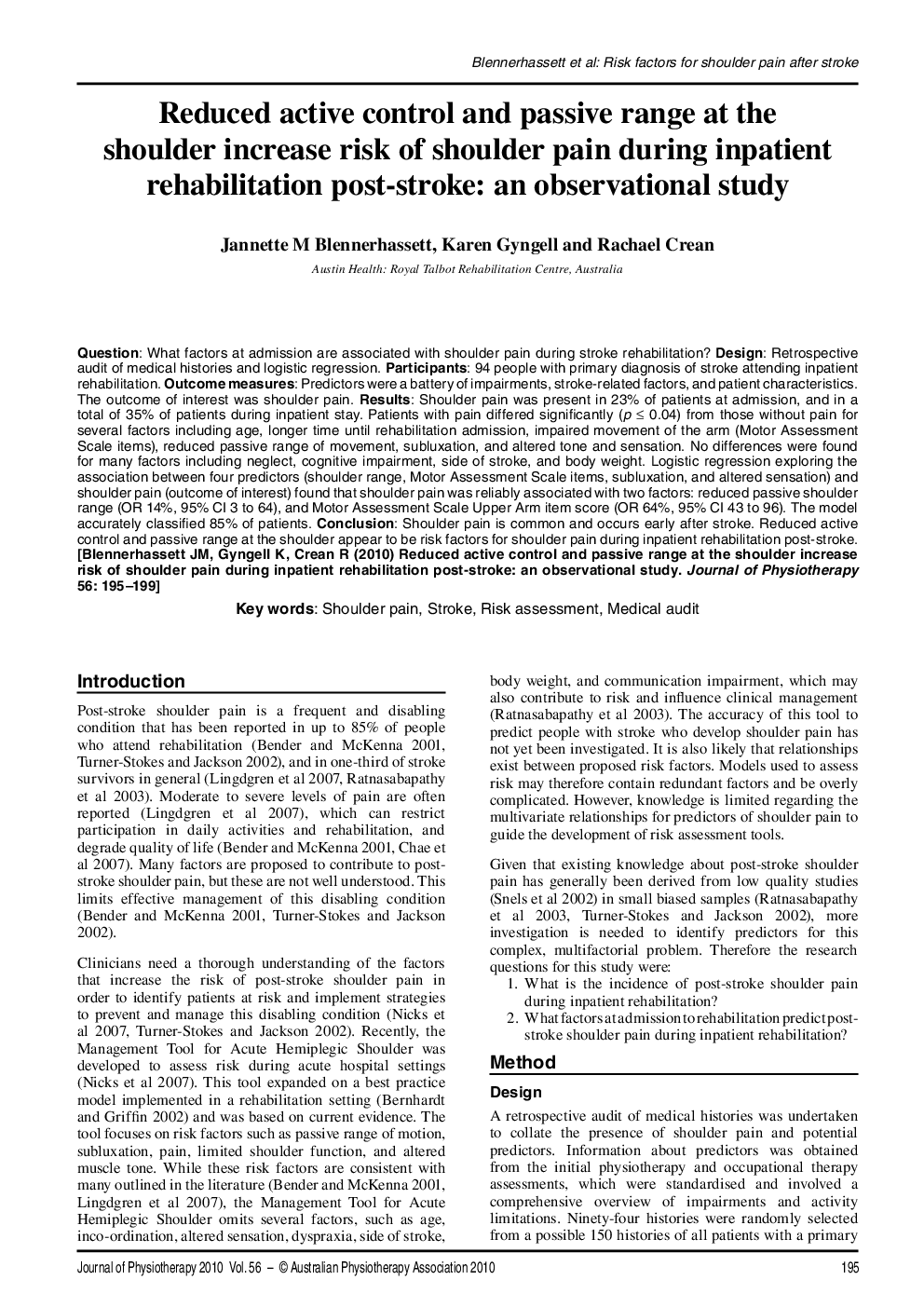| Article ID | Journal | Published Year | Pages | File Type |
|---|---|---|---|---|
| 2622000 | Journal of Physiotherapy | 2010 | 5 Pages |
QuestionWhat factors at admission are associated with shoulder pain during stroke rehabilitation?DesignRetrospective audit of medical histories and logistic regression.Participants94 people with primary diagnosis of stroke attending inpatient rehabilitation.Outcome measuresPredictors were a battery of impairments, stroke-related factors, and patient characteristics. The outcome of interest was shoulder pain.ResultsShoulder pain was present in 23% of patients at admission, and in a total of 35% of patients during inpatient stay. Patients with pain differed significantly (p ≤ 0.04) from those without pain for several factors including age, longer time until rehabilitation admission, impaired movement of the arm (Motor Assessment Scale items), reduced passive range of movement, subluxation, and altered tone and sensation. No differences were found for many factors including neglect, cognitive impairment, side of stroke, and body weight. Logistic regression exploring the association between four predictors (shoulder range, Motor Assessment Scale items, subluxation, and altered sensation) and shoulder pain (outcome of interest) found that shoulder pain was reliably associated with two factors: reduced passive shoulder range (OR 14%, 95% CI 3 to 64), and Motor Assessment Scale Upper Arm item score (OR 64%, 95% CI 43 to 96). The model accurately classified 85% of patients.ConclusionShoulder pain is common and occurs early after stroke. Reduced active control and passive range at the shoulder appear to be risk factors for shoulder pain during inpatient rehabilitation post-stroke.
